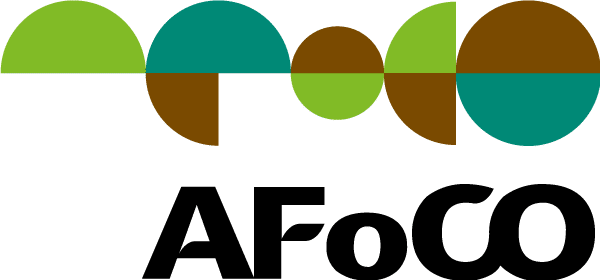Overview of Forest Sector
Timor-Leste is a Southeast Asian nation with a total land area of about 14,870 square km, largely mountainous areas[1]. According to the FAO, 61.94% or about 921.1 thousand ha of Timor-Leste is forested as of 2020[2]. Since 1990, there has been no planted forest, thus, naturally regenerating forest accounts for 100% of the forest area. Between 1990 and 2020, the country lost 42 thousand ha of its forest cover. In addition, Forest growing stock which recorded 96.31 million m³ over bark in 1990 decreased to 92.11 million m³ over bark in 2020. However, carbon stock in biomass has had no change from 90.24 tonnes/ha since 1990.
According to the 2012 data for land use and land cover, forest land is divided into 3 types: Sparse forest (37.7%), Dense forest (21.2%), and Very sparse forest (4.3%)[3], Among them, there are negative trends showing a loss of dense forests and destruction of sparse forests primarily due to deforestation and illegal logging directly, and ineffective law enforcement indirectly[4]. Also, watershed and land degradation, loss of soil fertility and biodiversity, and excessive runoff and soil erosion occur as farmers practice deforestation activities in order to expand their crop production areas and pervasive demographic pressures and poverty in the country[5].
The Ministry of Agriculture, Forestry and Fisheries (MAFF) is the main government department responsible for development forestry. The Director General of Forestry, Coffee, and Industrial Plants (DG-FCPI) is one of the Ministry’s four general directorates and holds broad responsibilities for community forest, watershed management hydrographic, forest protection, forest plantation, development of protected natural areas and other aspects of development forestry.
The Strategic Development Plan (SDP) 2011-2030 recognizes that the priority is to “increase social capital and improve the country’s infrastructure, supported by an emphasis on strategies for management of natural resources and environmental care and protection.”[6] The general objective of the national forest policy remains: sustainable management of forest resources and watersheds in order to provide environmental, social and economic benefits to people of Timor-Leste. The Specific objectives of the Forest Policy are 1) Forest Protection and Management, 2) Reforestation and Soil Restoration, 3) Watershed Conservation, 4) Community and Private Participation in Forestry, 5) Private Sector Development, 6. Institutional Development. In order to achieve the objectives, 4 major instruments will be deployed as follows: 1) Forest and Basin Management Instruments, 2) Instruments for the Use of Forest Products, 3) Knowledge and Information Tools, 4) Governance and Legislative Instruments.
[1] The World Bank, World Development Indicators (2020). Land Area, Timor-Leste [Data file].
[2] FAO. 2020. Global Forest Resources Assessment 2020: Main report. Rome
[3] RDTL. (2017). National Action Program To Combat Land degradation (NAP).
[4] Ministry of Agriculture and Fisheries Democratic Republic of Timor-Leste. 2018. Final Country Report of the Land Degradation Neutrality Target Setting Programme in Timor-Leste.
[5] Ministry of Agriculture and Fisheries Democratic Republic of Timor-Leste. 2017. National Policy on Forests of Timor-Leste.
[6] Government of Timor-Leste (GoTL), Sustainable Development in Timor-Leste. 2012. Report National for the United Nations Commission on Sustainable Development in preparation for Rio+20. Ministry of Economy and Development.
Forest Policy Archive
| DATE | TYPE | TITLE | ENGLISH | NATIONAL LANGUAGE |
|---|---|---|---|---|
| 2020 | Law | Establishing the Functional Organic structure of the Directorate-General for Forests, Coffee and Industrial Plants | Link | |
| 2020 | Law | Establishing the Functional Structure of the Decentralized Services of the Ministry of Agriculture and Fisheries | Link | |
| 2020 | Project Report | Strenthening National Forest Policy in Timor-Lest 2019 | Link | |
| 2018 | Country Report | Final Country Report of the Land Degradation Neutrality Target Setting Programme in Timor-Leste | Link | |
| 2017 | Law | Establishing the General Forestry Regime | Link | |
| 2017 | Strategy/Plan | Timor-Leste's Nationally Determined Contributions (NDCs) to the UNFCCC | Link | |
| 2017 | Strategy/Plan | Timor-Leste Roadmap | Link | |
| 2017 | Policy | National Policy on Forests of Timor-Leste | Link | |
| 2016 | Law | Establishing and regulating the functional structure of the General Directorate for Forests, Coffee and Industrial Plants (DGFCPI) of the Ministry of Agriculture and Fisheries (MAP). | Link | |
| 2015 | Strategy/Plan | Timor-Leste's National Biodiversity Strategy and Action Plan (NBSAP) | Link | |
| 2011 | Law | Establishing the Higher Technique Specialized Team of the Ministry of Agriculture and Fisheries | Link | |
| 2010 | Strategy/Plan | Timor-Leste Strategic Plan 2011-2030 | Link | |
| 2007 | Law | Approving the National Policy for the Forestry sector | Link | |
| 2004 | Strategy/Plan | Policy and Strategy Forestry and Watershed Subsector | Link | |
| 2000 | Law | On the prohibition of logging operations and the export of wood from East Timor | Link |

